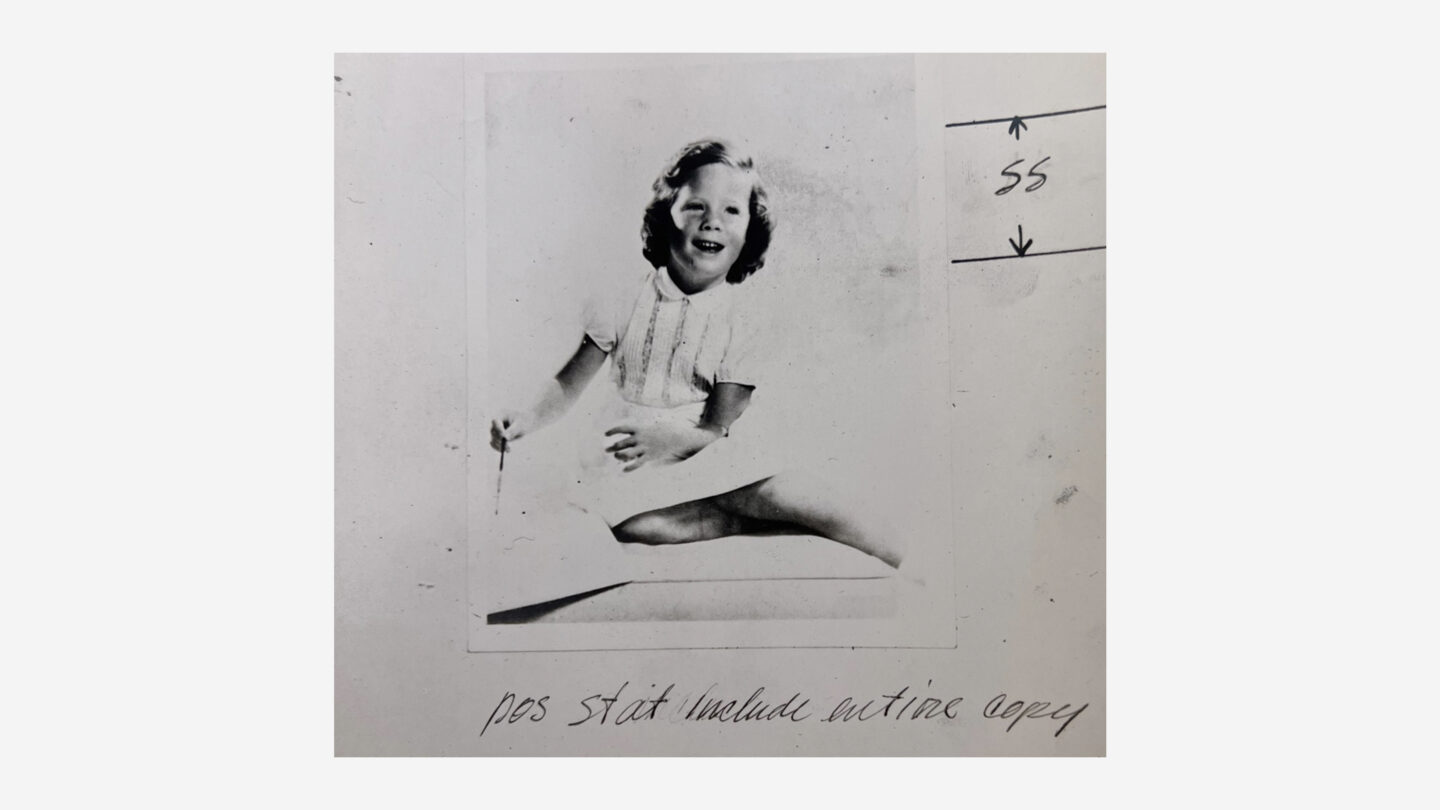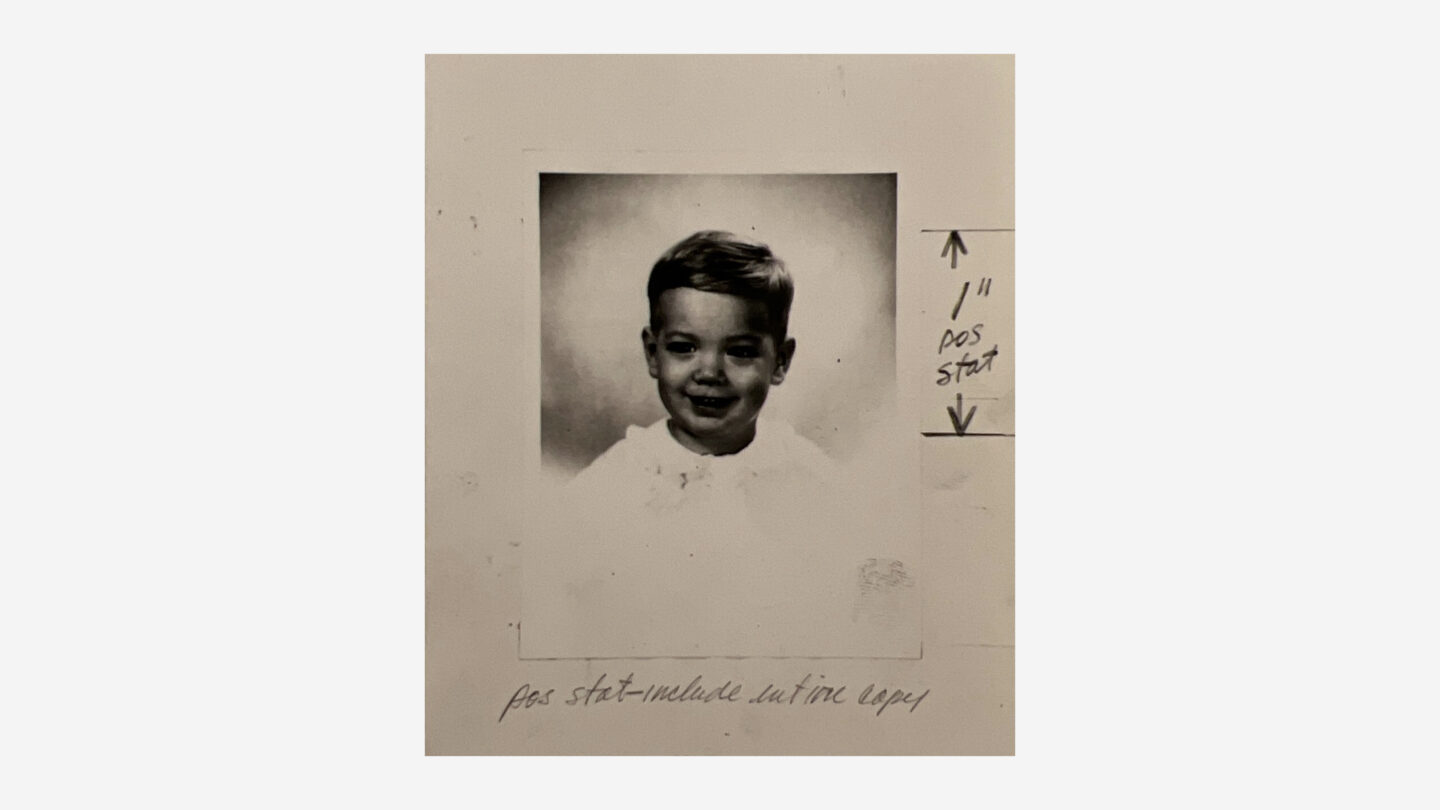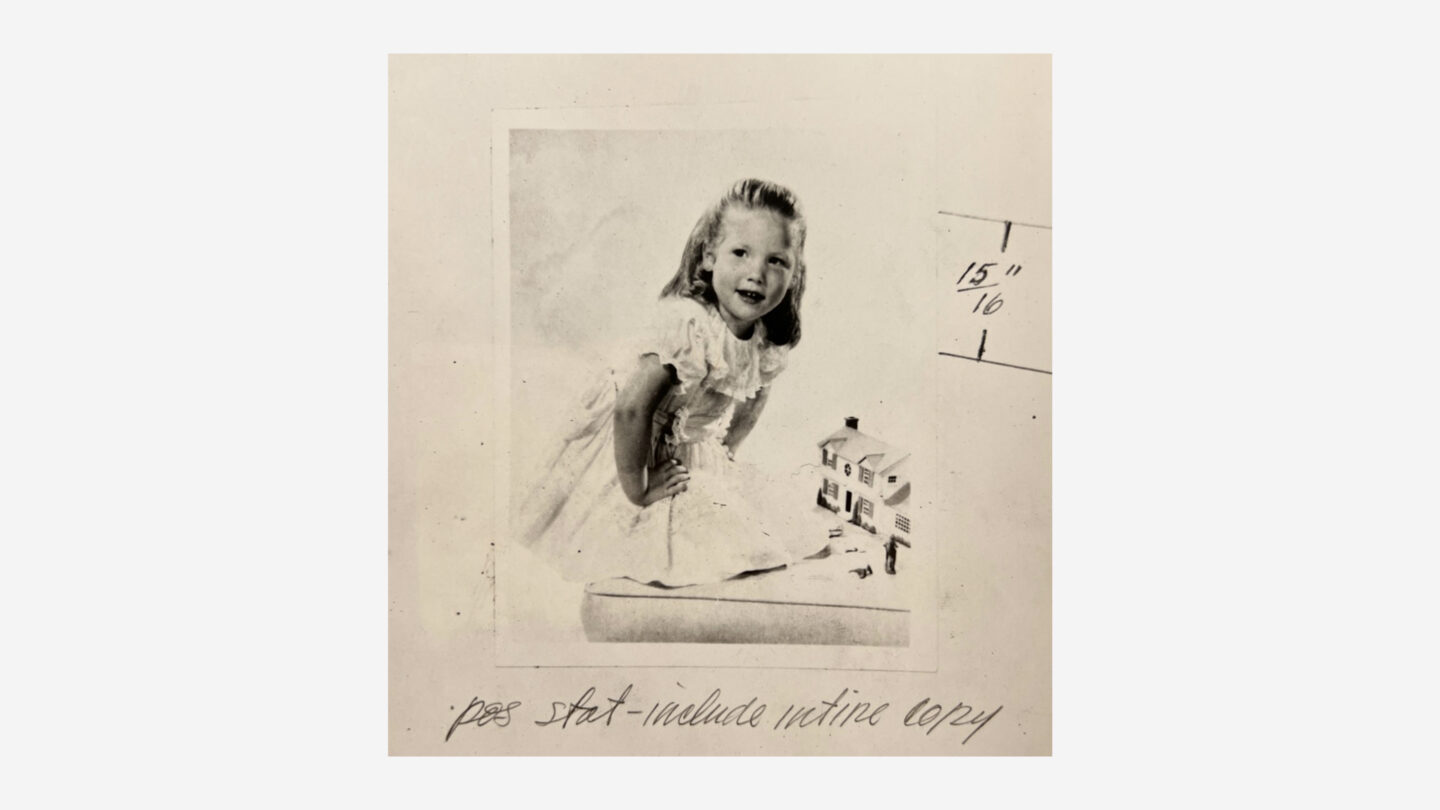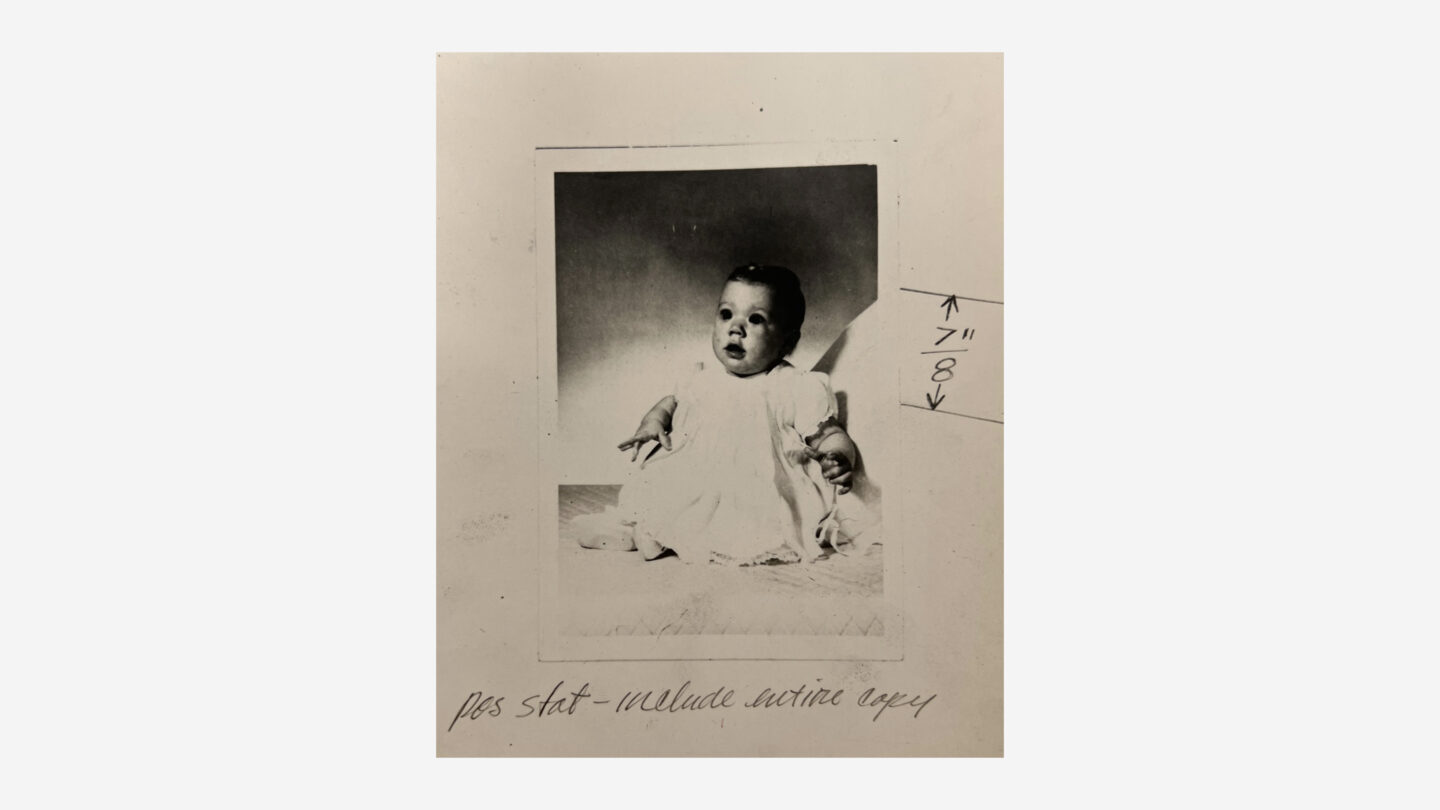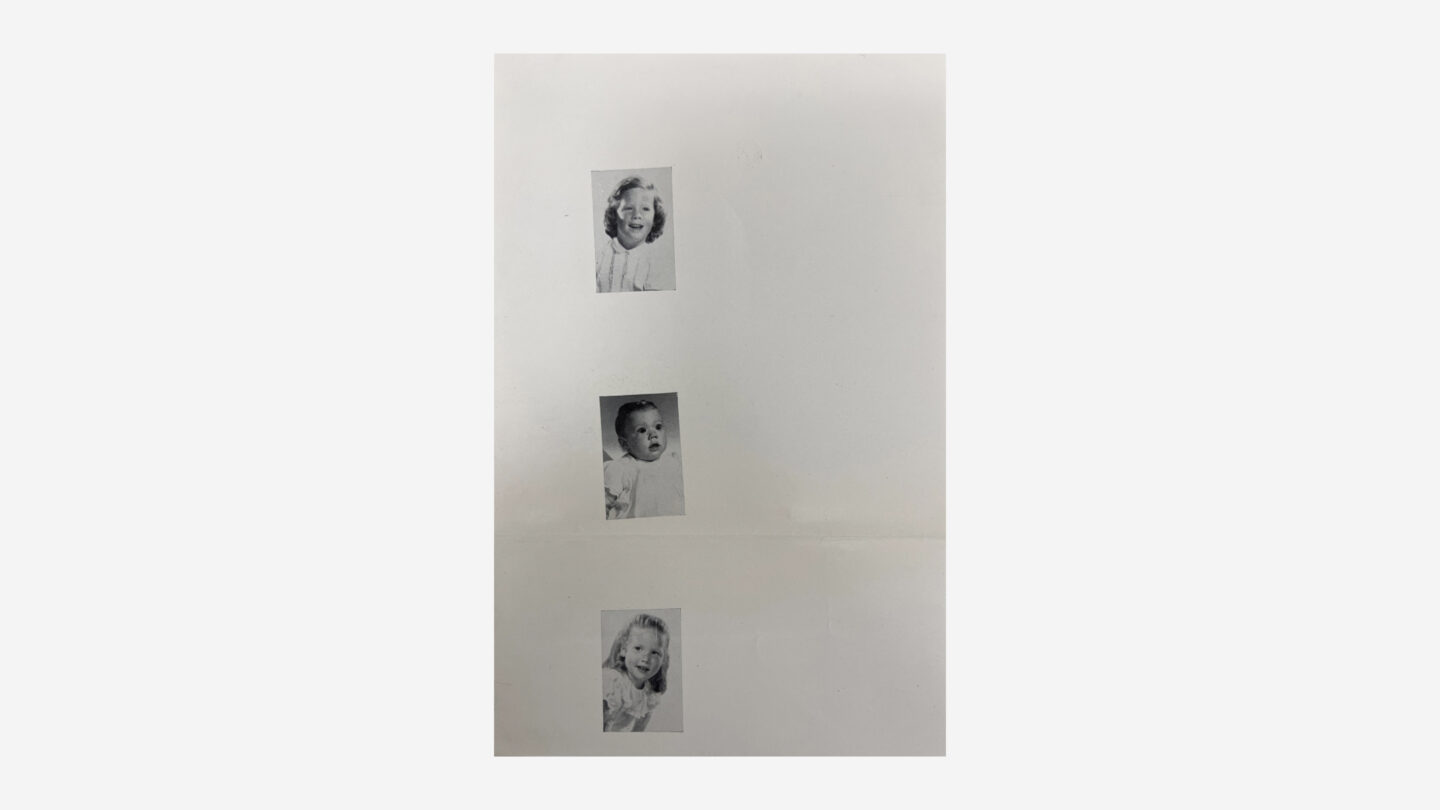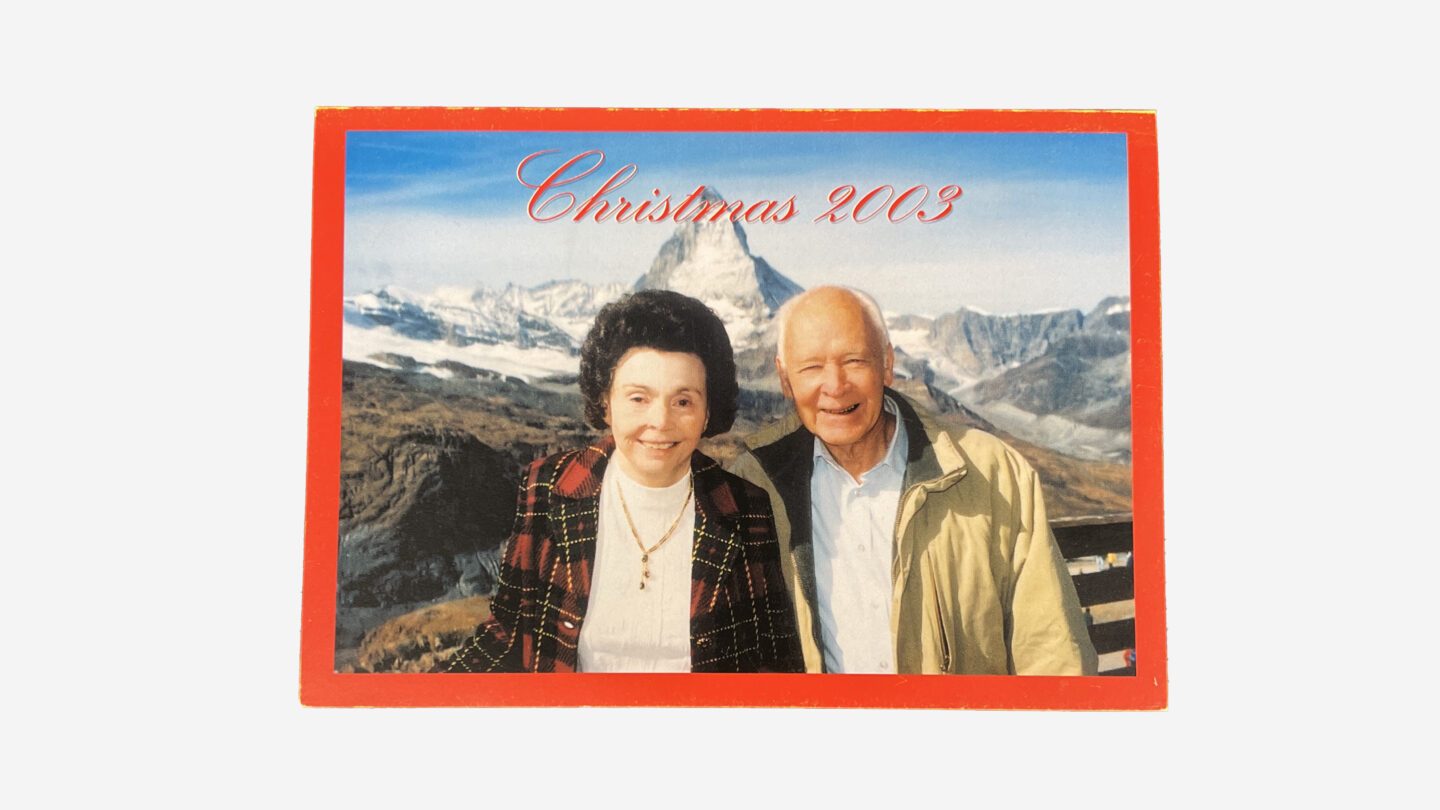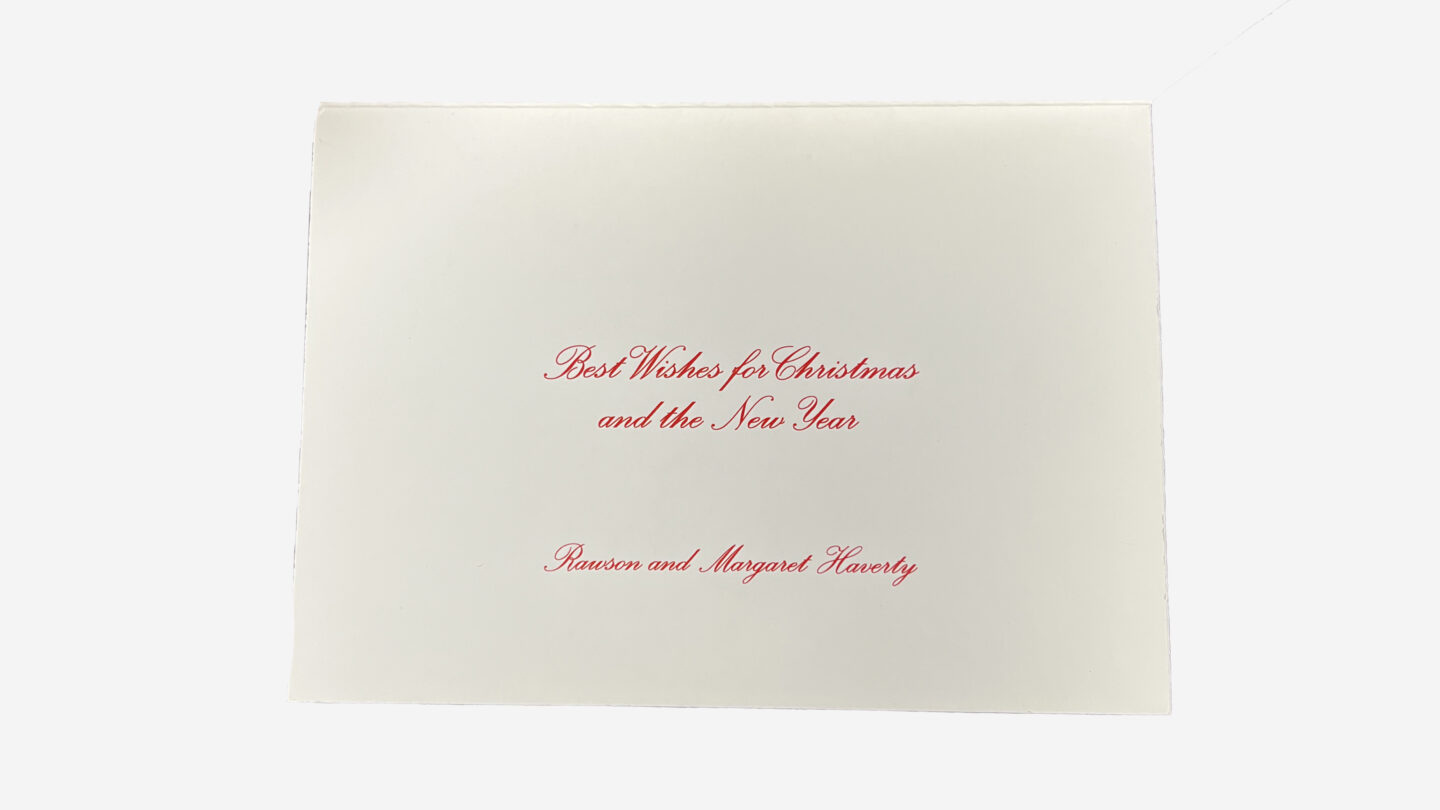In the heart of a Victorian winter, as snow gently blanketed the cobblestone streets of London, a small, unassuming invention was about to kindle a holiday tradition that would endure for centuries. It was 1843, a time when the Yuletide spirit was rekindling in England, inspired by the festive tales of Charles Dickens and the burgeoning customs of the season. Amidst this backdrop of holiday revival, the humble Christmas card emerged, not just as a novel curiosity but as a harbinger of a beloved worldwide practice. This tale begins not in a grand hall or a royal palace, but in the busy office of a civil servant, Sir Henry Cole, whose simple yet ingenious idea would transform how we express our holiday cheer. As we prepare to adorn our mantels with modern greetings this festive season, let’s journey back to Victorian England to uncover the origins of this cherished tradition—the Christmas card.
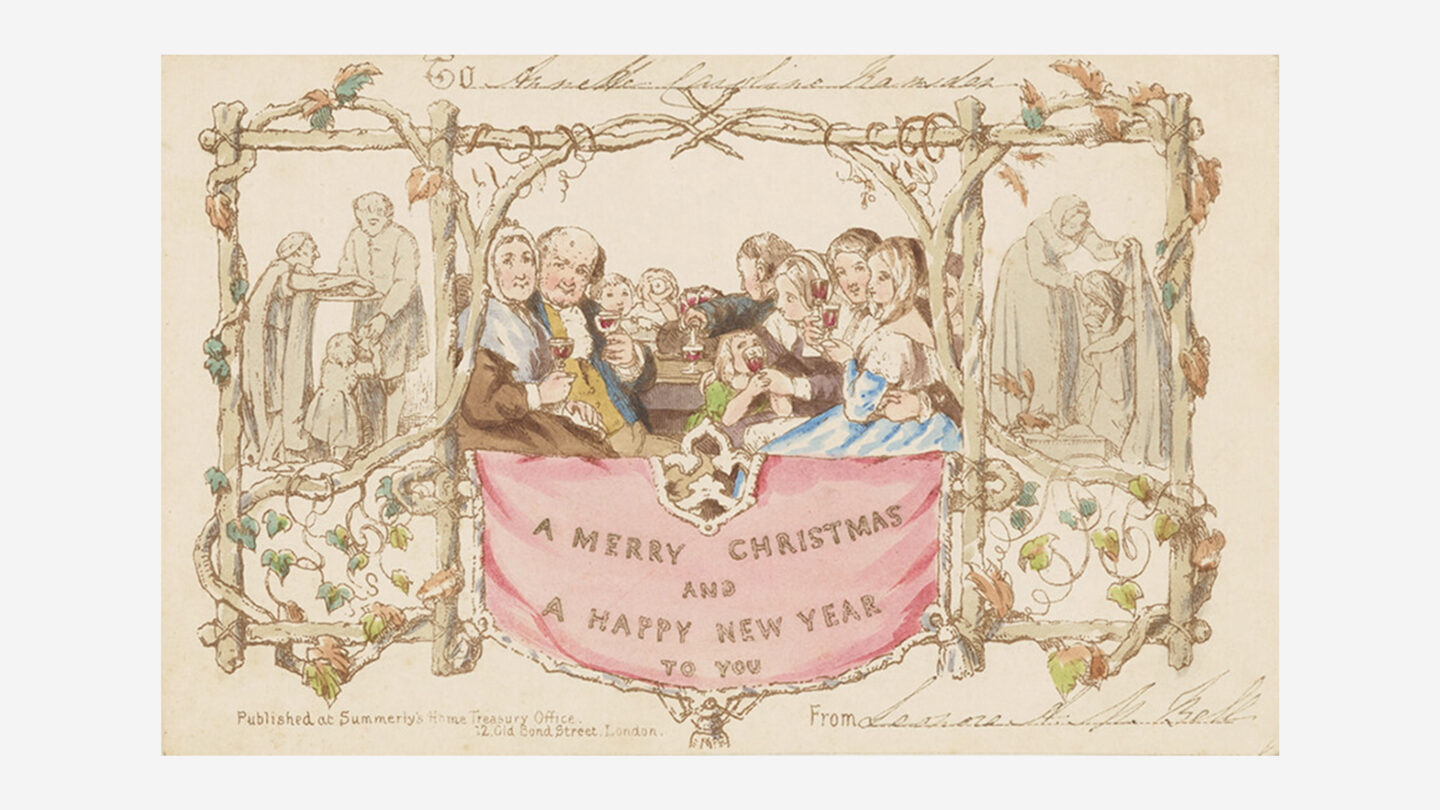
The first British commercially produced Christmas card. (2003-0476). The Postal Museum
The 1st Christmas Card
The holiday season was an important time for those living in the 1800s. Many practices enjoyed today, such as caroling and feasting, were popularized, and the Victorian holiday staple, “A Christmas Carol,” was published by English novelist Charles Dickens. The holidays were also an opportunity to write long, personalized letters to loved ones. For civil-servant and scholar Sir Henry Cole, this was a tiresome tradition. The introduction of the “Penny Post” in the British postal system allowed senders to mail letters or cards for just one penny stamp, resulting in overwhelming amounts of mail. Not wanting to ignore correspondence, Cole wanted a way to respond to less letters with the same amount of intention. He approached colleague and artist J. C. Horsley to create a triptych, a work of art that is divided into three panels. The design featured two charitable acts, a family party, and a banner with the greeting “A Merry Christmas and A Happy New Year To You.” Cole took Horsley’s illustration to a London printer and requested multiple copies of his work. Using lithographic printing, or the creation of images with metal plates, the image was printed on a piece of stiff cardboard. At the top, was the salutation “TO: ” and on the bottom, the closing “FROM: ,” allowing Cole to personalize the card for each recipient. His idea became the first Christmas card.
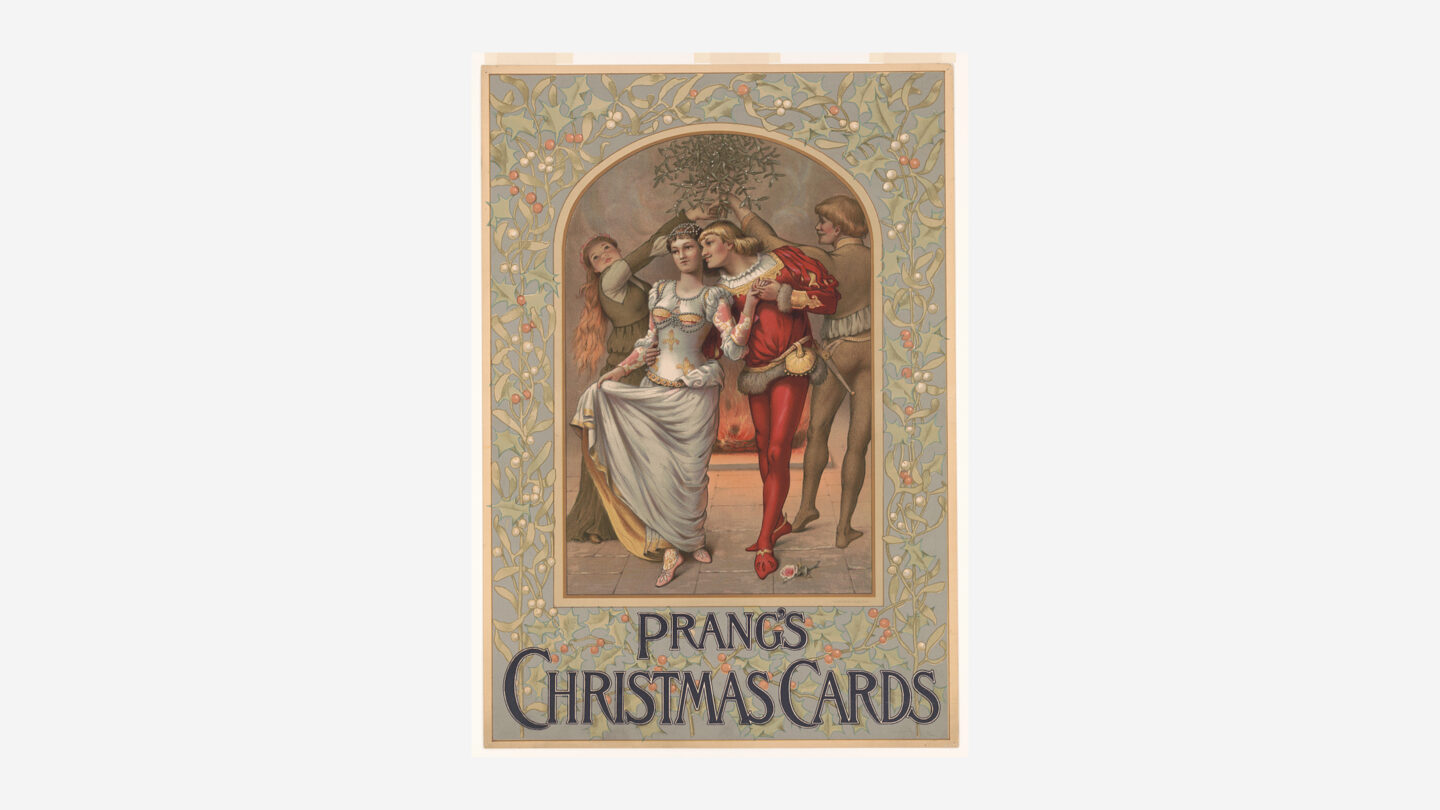
L. Prang & Co. Prang’s Christmas cards., ca. 1886. Photograph. Library of Congress
The 1st American Christmas Card
In the United States, the history behind the first American Christmas card is slightly different. In 1873, “father of the American Christmas card” Louis Prang produced holiday cards out of his factory in Roxbury, Massachusetts. He was an avid supporter of the arts and believed that artwork should be accessible to everyone. Collaborating with artists, he used Christmas cards to highlight their work and showcase it around the country, even hosting design challenges for Christmas cards in 1880. Winners in the contest would have their cards showcased in art galleries around the country, including the Doll & Richards art gallery in Boston and the American Art Gallery in New York. This would mark Christmas cards as holiday keepsakes and begin the tradition of continuing to share, save, and send greetings during Christmastime.
Despite his success, by the 1890s, Prang’s Christmas creations met their demise with the arrival of German lithographers and the introduction of “gimcracks,” cheap figurines sent to relatives or friends in replace of a card. Christmas cards were quickly losing popularity and it would take a team of Kansas-based postcard printers and the founder of the Eastman Kodak Company to revive their production.
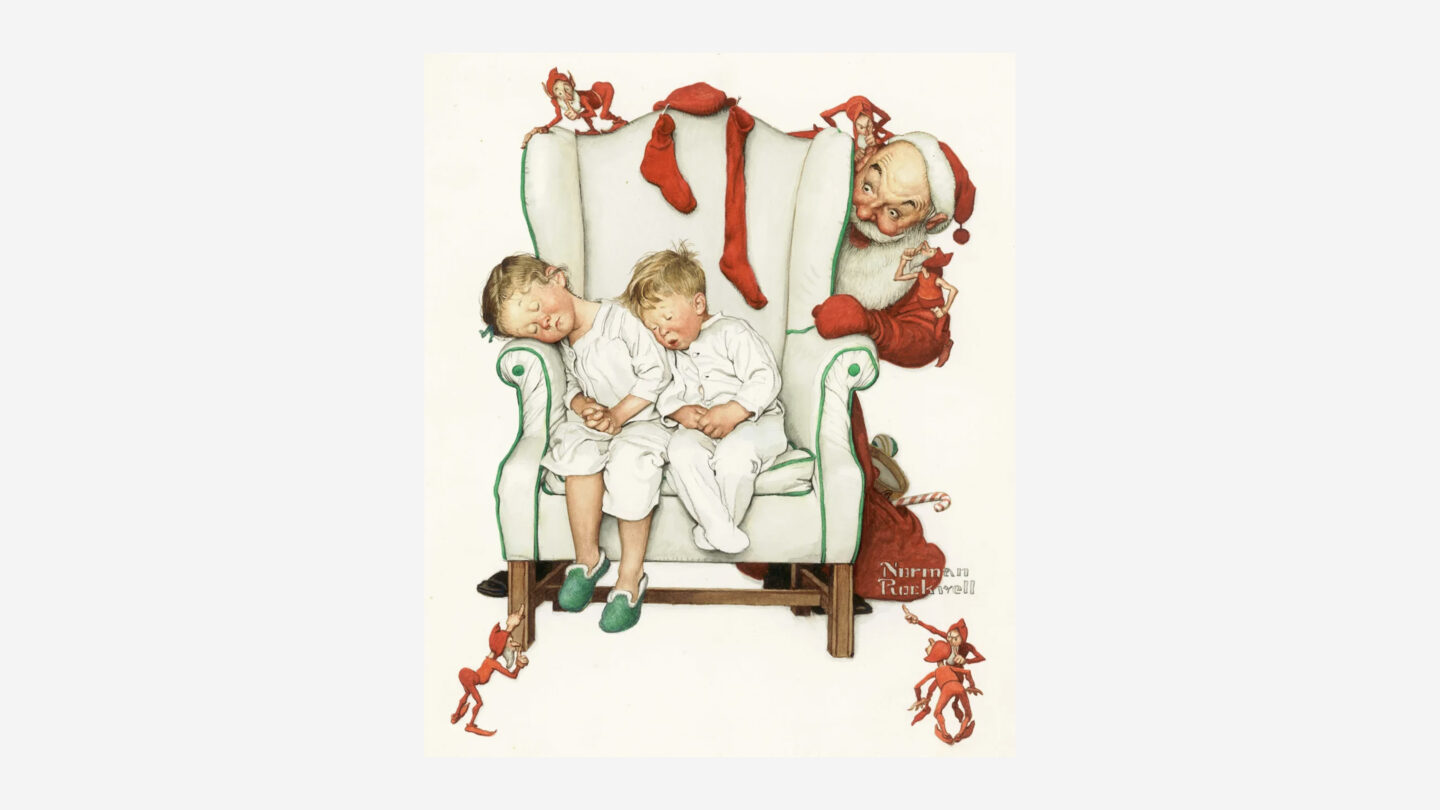
Between 1948 and 1957, Norman Rockwell created 32 Christmas card designs, including Santa Looking at Two Sleeping Children (1952) for Hallmark. Courtesy of the Hallmark Archives, Hallmark Cards, Inc.
Hallmark & Kodak
In 1900, American entrepreneur and founder of the Eastman Kodak Company, George Eastman, introduced the first mass market camera to the public. The “Kodak Brownie” made photography accessible to consumers and although rare, photo cards were created to share portraits alongside messages. Their popularity would increase in 1912, when “offset” printing was introduced. Using rubber rollers on presses instead of heavy metal plates allowed for sharp and colorful images. This printing technique continued to gain steam when Joyce Hall and his two brothers, Rollie and William, founded the Hall Brothers Company (later to be known as Hallmark) in 1915. The bright images coupled with a card that was 4 inches wide and 6 inches high, folded once, and inserted in an envelope, was instantly a hit amongst the public and quickly grew in popularity season after season. By the 1950s, the production of Christmas cards was at an all-time high and celebrated artists such as Norman Rockwell and Salvador Dali were commissioned by Hallmark to design cards.
Christmas Cards for the Havertys
The 1950s also saw a demand for personalized Christmas cards, unique greetings that couldn’t be found in Hallmark or on a canvas by Rockwell. However, the glamour surrounding these cards came at a price. Although new technology provided households with more access to customize their holiday greetings, it was quite expensive to do so. Personalized Christmas cards became a luxury that only certain families were able to have, an opportunity that Atlanta’s Haverty family were quite familiar with.
In 1885, brothers James Joseph and Michael Haverty founded Havertys Furniture Company in downtown Atlanta. Providing “friendly service” and “quality furnishing” for customers, Havertys quickly grew in and outside of Georgia, allowing the family to experience financial success. By the mid-1940s, J. J. Haverty’s grandson, Rawson Haverty, was appointed as corporate secretary, allowing him to oversee the continued development of his grandfather’s company. Rawson’s position provided his family with the opportunity to create Christmas cards during the holidays. However, despite the lack of financial strain, the process was still tedious. Not only did the Havertys use illustrations to personalize their Christmas cards, but they used photographs as well, a design that needed to be completed by hand and in layers.
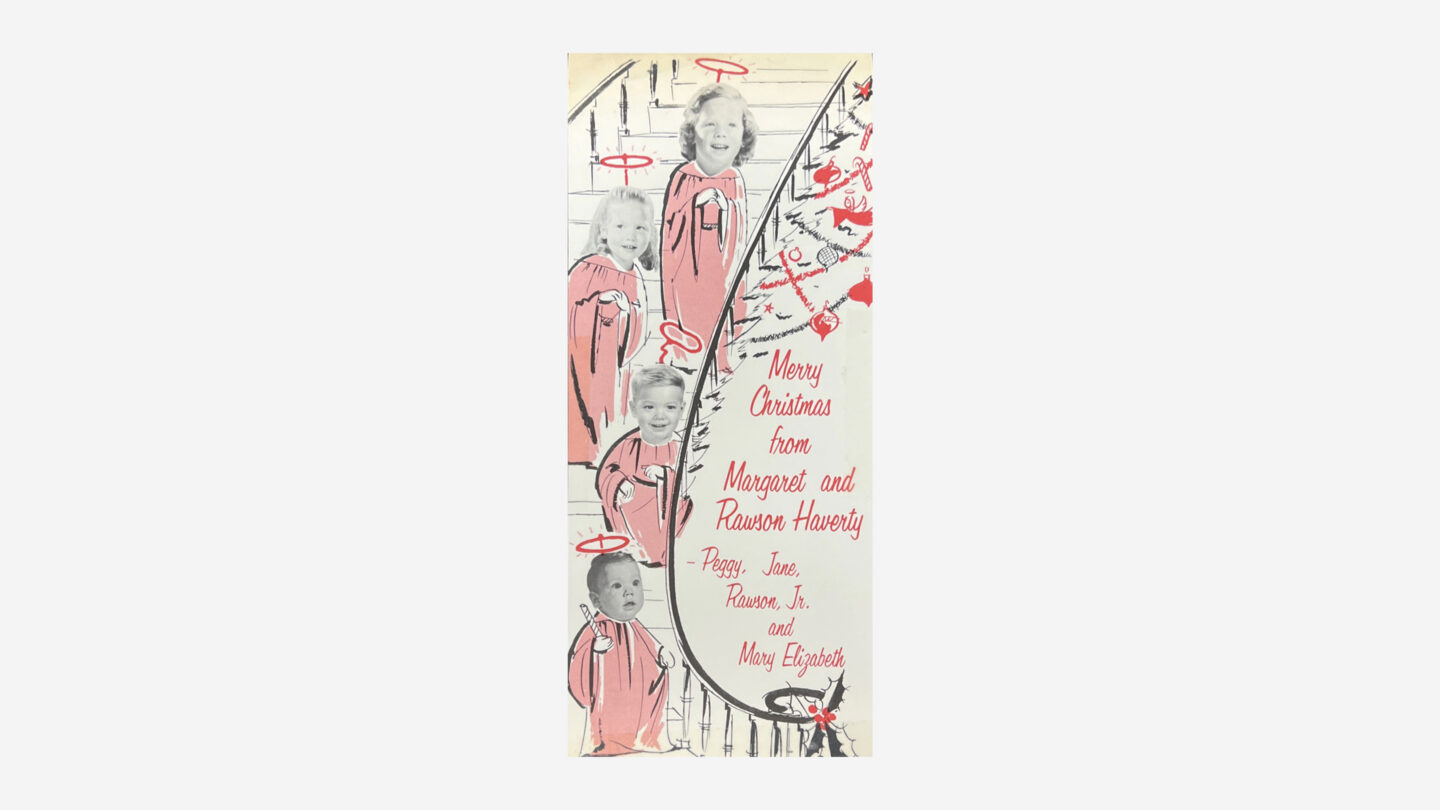
Final design of Haverty Family Christmas Card. Kenan Research Center at Atlanta History Center
During the holiday season, Rawson and his wife Margaret designed Christmas cards. One year, their card featured photographs of their children wearing angelic attire, alongside a Christmas tree, and a message that read “Merry Christmas from Margaret and Rawson Haverty – Peggy, Jane, Rawson Jr., and Mary Elizabeth.” The Havertys collaborated with designers and printers to create their envisioned card.
First, any graphics would be removed from the background (children’s faces, holiday message, and illustrations).
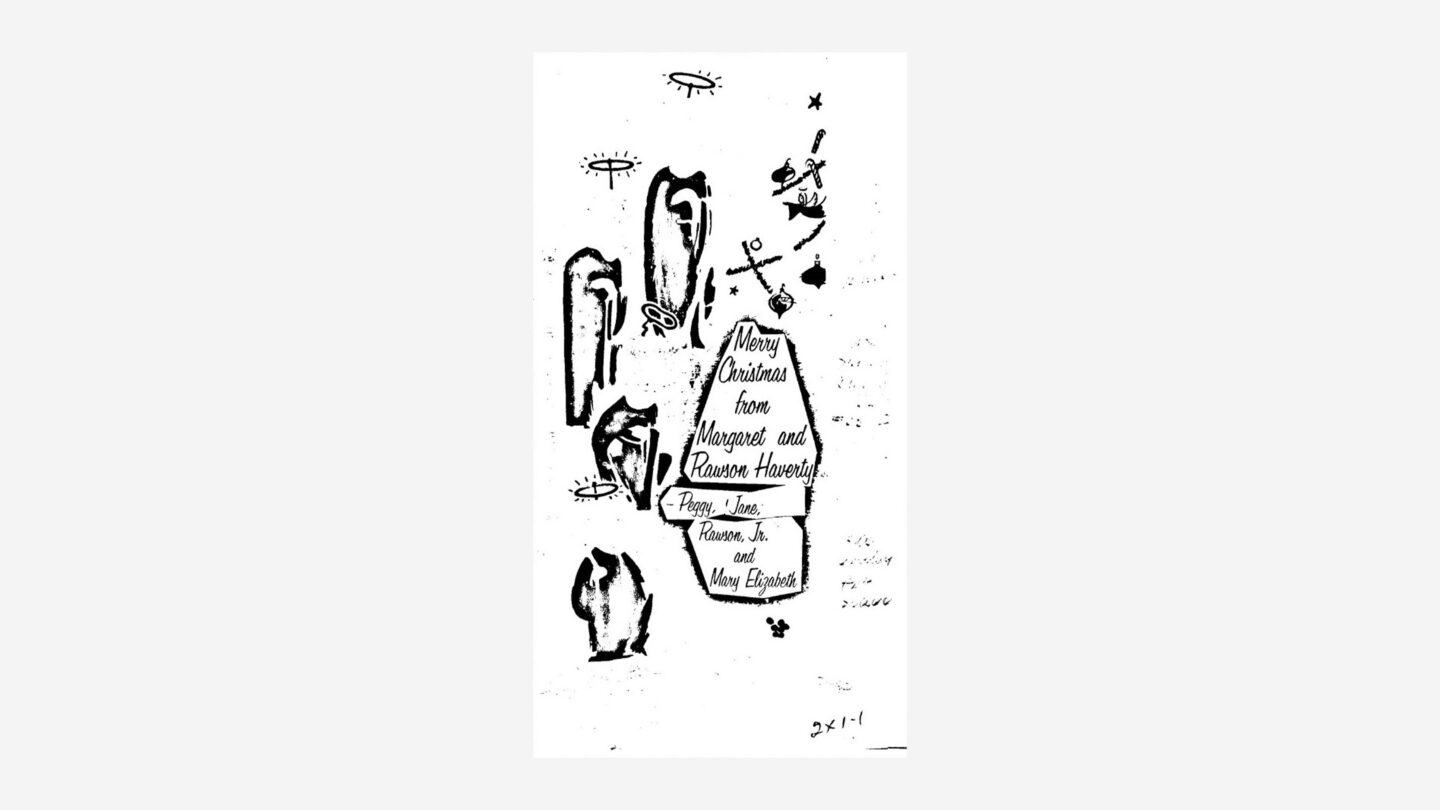
Background of Haverty Christmas card. Kenan Research Center at Atlanta History Center
Next, the card would be reassembled layer by layer. Since the graphics included photographs and red text and imagery, they would need to create a template without these elements.
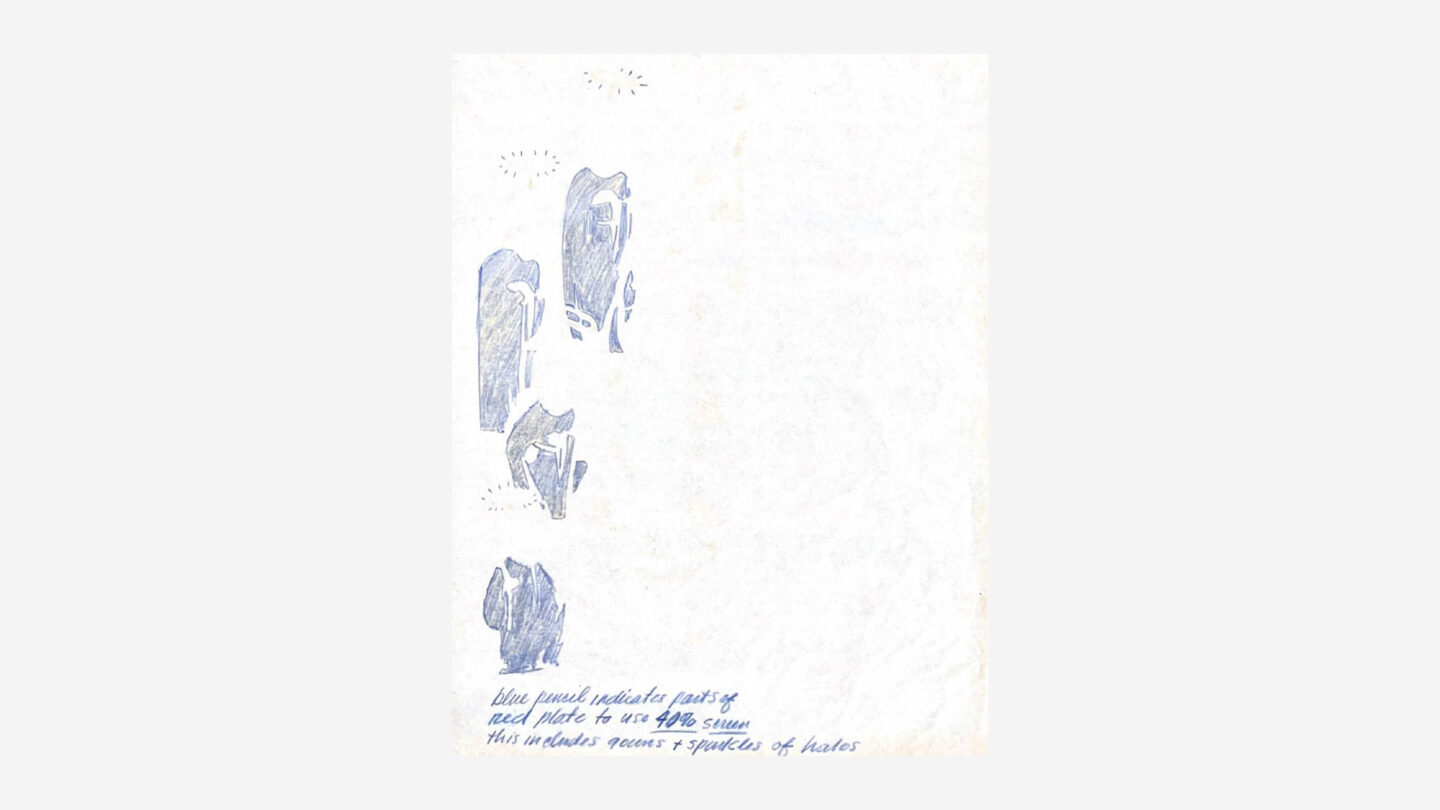
Haverty Christmas card image template. Kenan Research Center at Atlanta History Center
After the templates were created, they would be recolored and inserted on the original background.
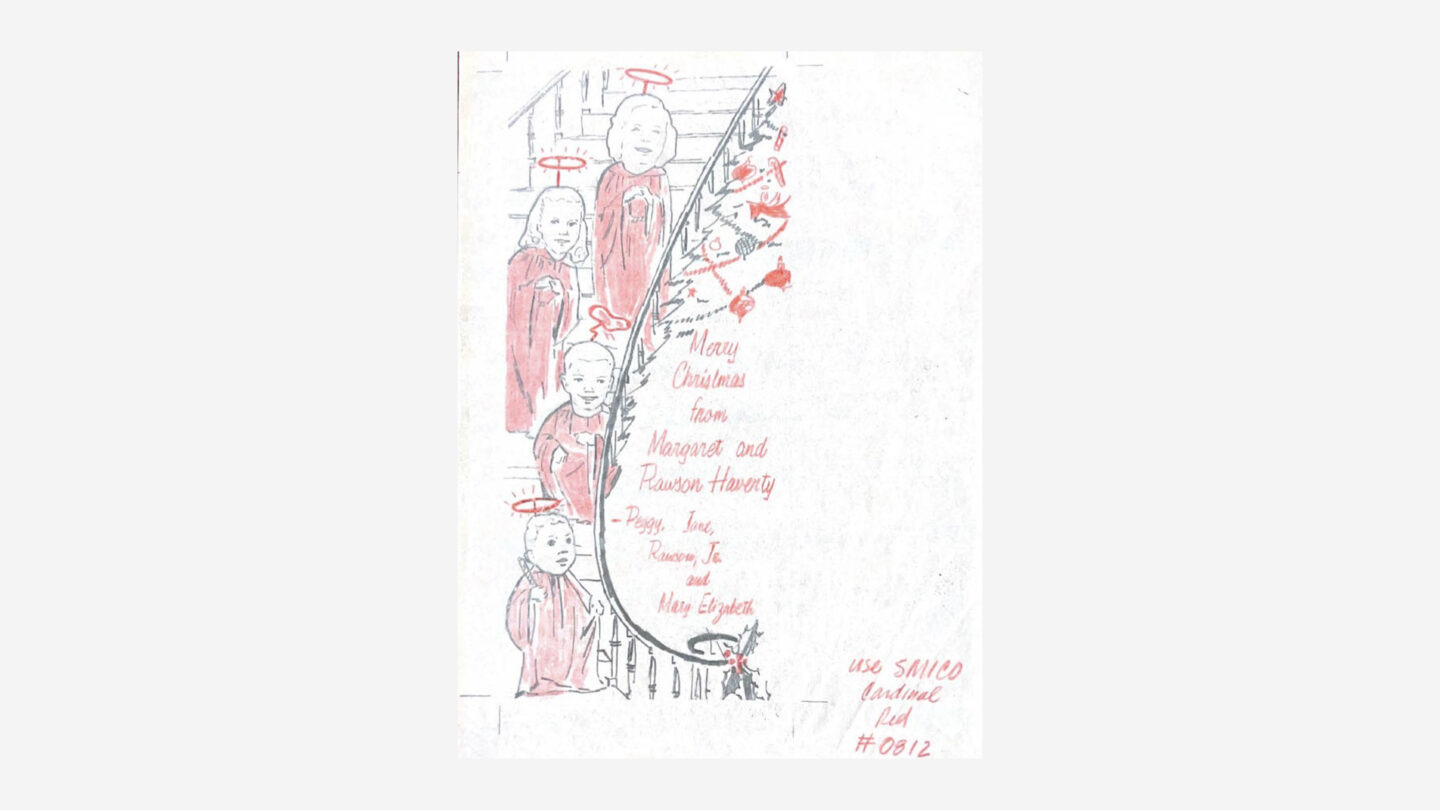
Red Haverty Christmas Card template. Kenan Research Center at Atlanta History Center
Last, portraits of Peggy, Jane, Rawson Jr., and Mary Elizabeth, were resized and shaped onto the desired spaces on the template. With the last layer complete, the Havertys would have their desired Christmas card.
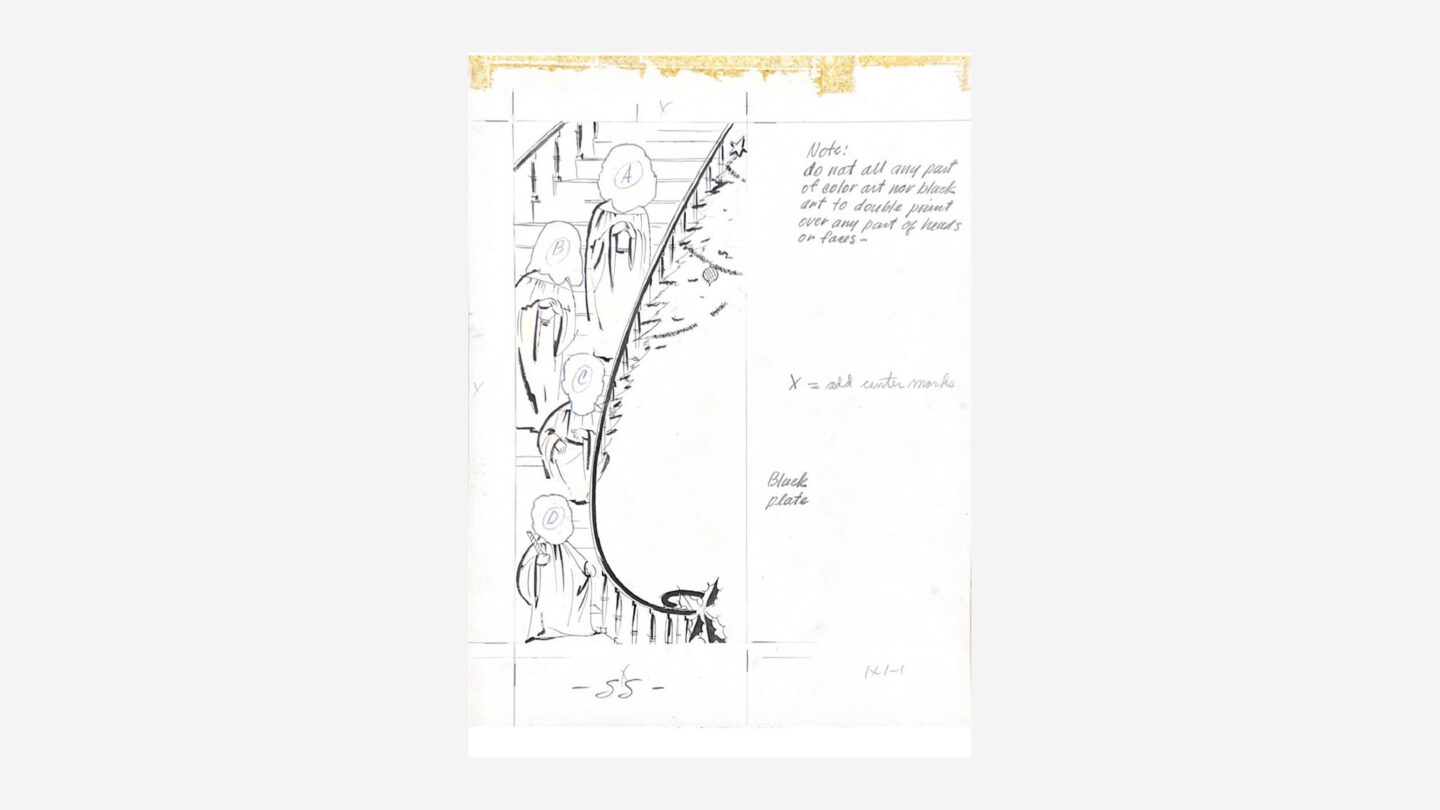
Haverty Christmas Card face placement template. Kenan Research Center at Atlanta History Center
Even as technology advanced, the Havertys continued their Christmas card tradition. In 2003, Margaret and Rawson created a Christmas card for family and friends.
Christmas Cards Today
Today, the methods used in 19th century England have disappeared and the design process the Haverty family used is obsolete. As Christmas cards are easier to create than ever thanks to technology, they are now more accessible than ever and can be found in a multitude of languages and depict diverse ways to celebrate the holiday season. Christmas cards may have changed, but their purpose remains constant. They are intended to maintain connection, to remind loved ones of time apart, and to bring each other well wishes into the new year.



